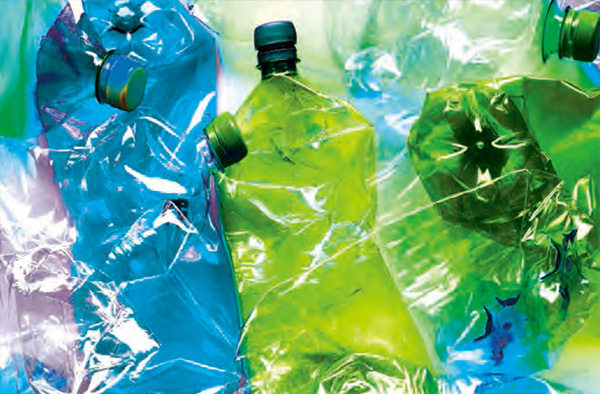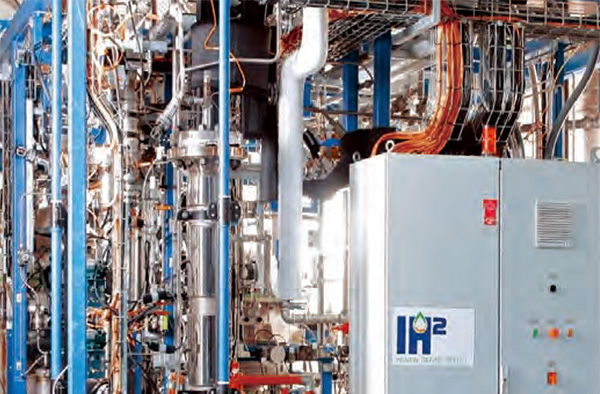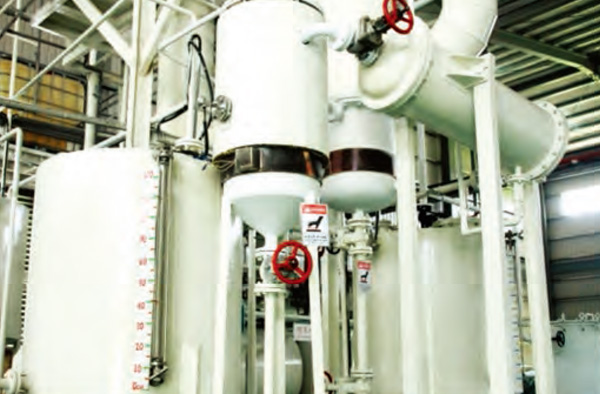Plastic wastes for sourcing energy and fuel
May 2017 Issue, Plastic & Rubber Asia Magazine
Plastic wastes as feedstocks are helping pedal the wheels of a closed-loop economy through energy recovery technologies that are able to extract valuable products such as oil, gas and electricity from solid wastes, says Angelica Buan.
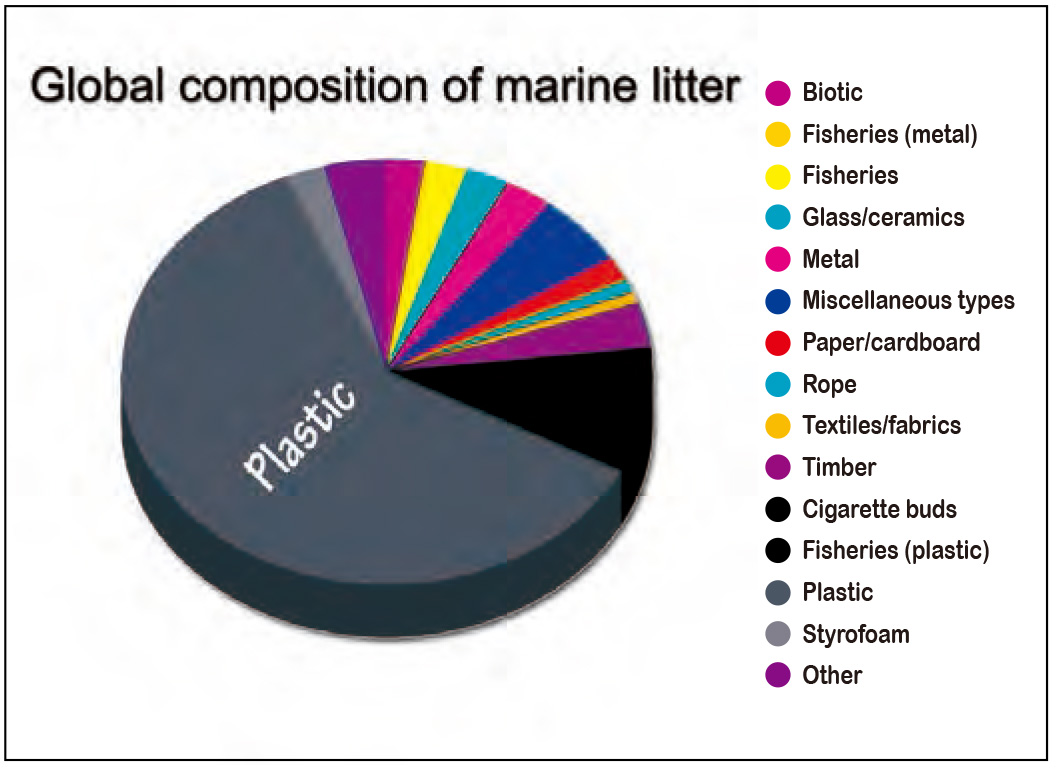
More than 50 years ago, mar ine l i t ter was almost unheard of, except for a few anecdotal reports of indigestible materials eaten by marine animals that have led to what was considered the first scientific studies on plastic waste ingestion by seabirds like the Laysan Albatross.
Plas t i c s compr i se the larger bul k of was tes , according to studies collected and summarised by Litterbase, an online portal for marine litter that aims to prune down results from more than a thousand scientific studies into easy-to-understand global maps and figures.
Litterbase summarises the proportion of different litter types in di f ferent realms. Cur rent ly i t has condensed over 1,300 scientific publications, which showed plastics as a dominant material in the litter mix. In terms of global composition of marine litter, for example, plastics account for 60.89% of total based on 401 publications, and covering 1,626 locations. It also contributes to more than half of the litter composition in the seafloor; and to nearly 80% on the sea surface.
Plast ics are deemed the biggest culpr i t here. However, the initiation of a closed-loop economy (also known as the circular economy model), whereby recovered wastes become resource is turning the tide for plastics.
The European Commission (EC) , a l e ading campaigner for a circular economy, says that marine litter is "one of the clearest symbols of a resource
inefficient economy". I t adds that "shifting our perspective on waste plastics as valuable materials rather than envi ronmental plague enables the awareness that these materials, once recycled, can be pumped back into the economy."The EC claims that the circular economy approach, which puts the emphasis on waste prevention, recycling and reusing of materials/products, is the" best solution to the marine litter problem".
Plastic wastes as assets rather than liabilities – China an example
Plast ic wastes have become int r insic to growing economies, as urbanisation, fast-paced lifestyle and rise in affluence are portent for throw-away convenience of modern packaging and portability of lightweight items made of plastic.
The World Bank' s data revealed that global municipal solid waste (MSW) generation levels will continue to rise from 1.3 billion tonnes/year to 2.2 billion tonnes/year by 2025.
Mo s t eme r g i n g e c o n omi e s a r e g e n e r a t i n g more waste than they can manage. The 1.3-billion populated China tops the 2015 marine litter study led by University of Georgia research on 20 top countries with mismanaged waste. The study, which based its figures on 2010 estimates, cited China as responsible f o r 1 1% o f p l a s t i c l i t t e r a n d h o g g i n g 7 6% o f mismanaged waste. The country is exploiting means to halt the waste plague, one of which is to recycle 23 million tonnes/year of waste plastics by 2020.
China also takes credit as being the first country to convert waste plastics to fuel/oil (WTF). In 2001, an oil refinery in Hunan province successfully processed 30,000 tonnes of plastic wastes into 20,000 tonnes of provincial standard-compliant gasoline and diesel oil. The technology used for the process was not disclosed but Dr Mae-Wan Ho of the Inst i tute of Science in Society, author of an article on plastics to oil, guessed that thermal depolymerisation was used.
According to a recycled plastics and WTF forecast by Transparency Market Research (TMR), depolymerisation or pyrolysis is the basis for WTF conversion technology. The technology, i ts disti l lates and other refined petroleum products complement already existing traditional plastic recycling processes. In short, it serves a dual purpose: it forms a reliable source of alternative energy from an abundant feedstock having negligible economic value and is an eco-friendly disposal of nonrecycled plastics.
Like any other technologies, commercialisation is key to wider adoption of WTF. According to the TMR study, pol icymakers and energy indust ry player s in North America and Europe are focusing on the commercialisation of the technology.
Thus, investments are being piped in to increase plastic recycling capacity. While the West is leading, the Asia Paci f ic market , l ikewise, is modernising di f ferent WTF technologies and count r ies suc h as Saudi Arabia, Braz i l , and the UAE, are al s o contributing, TMR reports.
Breakthroughs in recycling technologies
Crossing out landfilling, a 2016 Science for Policy report by the Joint Research Centre (JRC), the EC's science and knowledge service, says recovery of
energy content of combust ible waste is an ideal option, especially for wastes that are not recyclable.
Cu r r e n t l y , n ew r e c y c l i n g t e c h n o l o g i e s a r e advancing. An example i s UK-based Recyc l ing Technologies's RT7000, a chemical recycling plant capable of processing up to 7,000 tonnes/year of all types of plast ic wastes, including non- recyclable plast ic waste. The technology, which Recycl ing Technologies describes as “the greenest and cheapest solutions yet for end-of-life plastic”, produces refinedgas that is condensed into Plaxx, while the noncondensables are recirculated back into the process.
Petrochemical/oil giant Shell’s foray into WTF is a technology called IH2 at its newly opened Bangalore Shel l Technology Cent re in Bangalore, India. The technology was developed by US-based Gas Technology Institute (GTI) in 2009 and has licensed it to CRI Catalyst Company, Shell's catalyst business, for exclusive worldwide deployment. The centre is helping pioneer efforts, using the IH2, to turn forestry and agri-wastes; and MSW into transportation fuels, with a new demonstration plant being built at the site.
No-waste solution to manage waste – India an example Meanwhile, India is making a case with its eco-friendly waste management solution. The country was ranked 12th in the University of Georgia’s study of top 20 polluting countries. As the country generates more
than a 100 million tonnes/day of MSW, the government had to increase its adoption of waste management solutions, including wider implementation of the plastic bag ban. But being a staunch innovator, India utilises waste plastics in building asphalt-modified roads, which has halved construction costs.
I n b e t w e e n t h e s e e f f o r t s , a u n i q u e p r o c e s s was developed by the Indian Institute o f P e t r o l e u m (IIP) to deal with recycling of PE and PP, which account for more than half the total amount of plastics consumed in the country. The t e c h n o l o g y c a n convert the PE/PP wastes to gasoline, diesel or aromatics, while simultaneously producing LPG in each case.
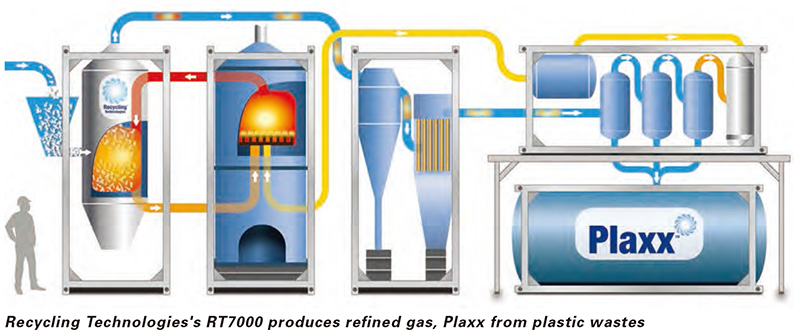
For 1 kg of clean waste PE around 750 ml of automotive grade gasoline or 850 ml of automotive grade diesel or 500 ml of toluene and xylene-rich aromatics can be produced. IIP describes the process as completely envi ronment - f r iendly, leaving no toxic residues. IPP says that the process is ready for commercialisation.
Not only can the adoption of this process free urban and semi-urban areas from too much plastics use, it can also generate jobs and provide livelihood for the community.
A viable option for sourcing electricity
Waste-to-energy (WTE) via thermal (incineration, gasification, pyrolysis) or biological, as a method for solid waste treatment holds huge growth potentials. Grand View Research reports that the WTE market size will reach US$44 billion by 2024.
The European WTE market led the global industry in 2015. The region is projected to grow at a CAGR of 6.2% over the forecast period, against the back of s t r ingent regulat ions to minimi se indus t r ial waste. Countries such as Germany, Austria and the Netherlands have adopted WTE technologies to utilise industrial waste.
... BACK
